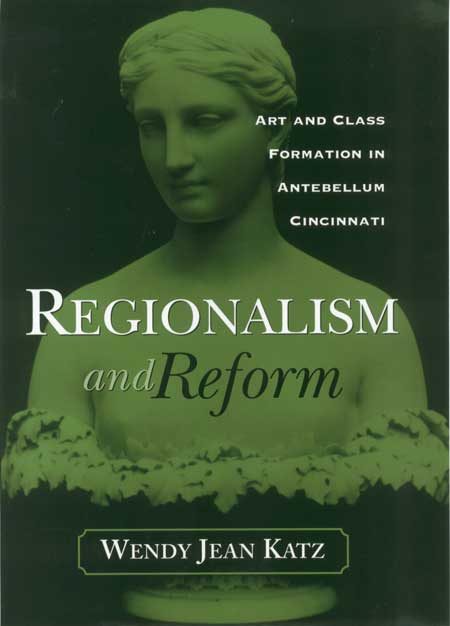Regionalism and ReformArt and Class Formation in Antebellum CincinnatiWendy Jean KatzUrban Life and Urban Landscape |
 9/17/2002 280 pp. 6x9  $47.95 cloth 978-0-8142-0906-6 Add cloth to shopping cart $24.95 paper 978-0-8142-5333-5 Add paper to shopping cart Shopping Cart Instructions Review/Change Shopping Cart & Check-out | |||
|
|
“This book is exceptionally smart, really one of the best books I’ve read in its interdisciplinary way. Katz makes excellent use of a wide variety of primary and secondary sources and the existing scholarship is mined, synthesized, and reformulated in such ways as to shed new light on old issues. Not only do I find this work convincing and compelling, I find it original, thoughtful, and useful.” —Barbara Groseclose, The Ohio State University Before the Civil War, Cincinnati, Ohio, was considered the most important art center of what was then regarded as the U.S. West. In this book, Wendy Katz explores the role of artists and art associations in moral and social reform in antebellum Cincinnati. Its leaders claimed for it the status of the future geographic and economic center of the nation, and supported art as part of their effort to forge a regional vision of morals and manners attractive enough to persuade their adoption nationally. An interlocking array of men, women, and associations cooperated to attach middle-class status to the cultivation of proper feelings and behavior. Art helped spread these values and draw people to a new identity based on them rather than on wealth, birth, or profession. Artists who believed in a moral purpose for art found themselves and their work aligned with urban boosters’ and reformers’ projects for attracting and assimilating a steady stream of immigrants to their vision of a harmonious urban culture. Through Katz’s analysis of Lilly Martin Spencer, Robert Duncanson, and Hiram Powers within this local discourse on taste and reform, their work emerges as participating in a process of class definition. At the same time, Katz upsets the idea of national culture as a one-way street from New York to the “provinces,” suggesting instead that the “national” was created in localities by artists and their patrons. Wendy Jean Katz is assistant professor of art and art history at the University of Nebraska–Lincoln.
| |||

